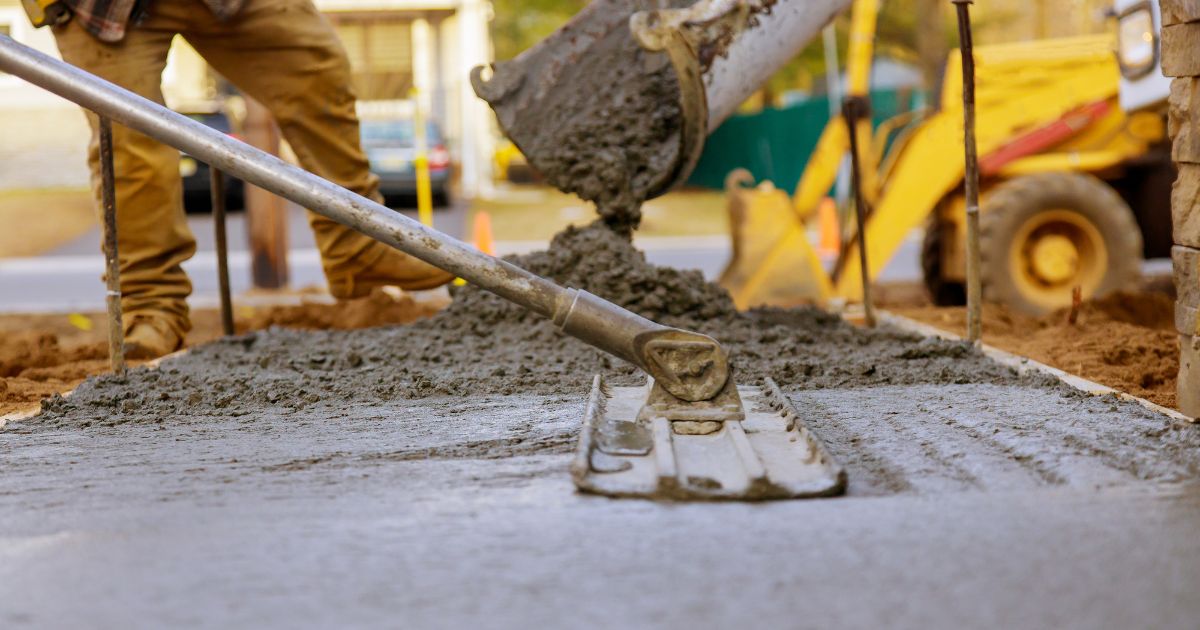Concrete is a fundamental material in the construction industry, prized for its versatility, strength, and durability. However, achieving these desirable properties requires more than just mixing the right ingredients; proper curing is essential. The importance of concrete curing cannot be overstated, as it plays a crucial role in developing the concrete’s strength, durability, and overall performance. This comprehensive guide explores the importance of concrete curing, the methods used, and best practices to ensure the highest quality concrete structures.
What is Concrete Curing?
Concrete curing is the process of maintaining adequate moisture, temperature, and time conditions in freshly placed concrete to allow it to achieve its desired properties. The curing process begins immediately after the concrete is placed and finished and continues for a specified period, typically ranging from a few days to several weeks. Proper curing ensures that the concrete undergoes complete hydration, which is the chemical reaction between cement and water that gives concrete its strength and durability.
The Importance of Concrete Curing
Strength Development
- Hydration Process: The strength of concrete primarily depends on the hydration process of cement. During hydration, cement particles react with water to form a hard, solid matrix that binds the aggregate together. Without proper curing, this reaction is incomplete, leading to weaker concrete.
- Compressive Strength: Adequate curing significantly increases the compressive strength of concrete. Research indicates that properly cured concrete can achieve up to 50% higher strength compared to inadequately cured concrete.
Durability
- Permeability: Proper curing reduces the permeability of concrete, making it more resistant to water and chemical ingress. This is crucial for structures exposed to harsh environmental conditions, such as bridges, marine structures, and wastewater treatment plants.
- Resistance to Environmental Factors: Well-cured concrete is more resistant to environmental factors such as freeze-thaw cycles, chemical attacks, and abrasion. This enhances the longevity and durability of concrete structures.
Minimization of Cracking
- Plastic Shrinkage Cracking: Inadequate curing can lead to rapid moisture loss from the concrete surface, causing plastic shrinkage cracking. Proper curing helps maintain surface moisture, reducing the risk of such cracks.
- Drying Shrinkage Cracking: Over time, concrete tends to shrink as it dries. Proper curing minimizes drying shrinkage, reducing the risk of cracks that can compromise structural integrity.
Surface Quality
- Finish and Appearance: Proper curing ensures a high-quality finish and appearance of concrete surfaces. It prevents surface defects such as dusting, scaling, and crazing, which can detract from the aesthetic and functional qualities of the concrete.
Methods of Concrete Curing
Various methods can be used to cure concrete, each with its advantages and applications. Here are some common methods of concrete curing:
Water Curing
- Continuous Sprinkling: Water is continuously sprayed or sprinkled onto the concrete surface to keep it moist.
- Ponding and Immersion: Water is retained on the concrete surface by creating ponds or immersing the concrete in water. This method is particularly effective for curing flat surfaces and precast elements.
- Wet Coverings: Wet burlap, cotton mats, or other moisture-retaining coverings are placed on the concrete surface to keep it moist.
Sealing
- Curing Compounds: Liquid membrane-forming compounds are applied to the concrete surface to seal in moisture. These compounds form a thin film that reduces moisture loss and allows the concrete to cure properly.
- Plastic Sheets: Polyethylene sheets or other impermeable membranes are placed over the concrete surface to prevent moisture loss. This method is particularly useful in hot and windy conditions.
Steam Curing
- High-Temperature Curing: Steam curing is used in precast concrete production and other applications where rapid strength gain is desired. The concrete is exposed to steam in a controlled environment, accelerating the hydration process and increasing early strength.
Insulating Blankets
- Heat Retention: Insulating blankets or mats are used to retain heat and moisture in the concrete. This method is particularly useful in cold weather conditions, where maintaining adequate curing temperatures is challenging.
Best Practices for Concrete Curing
To maximize the importance of concrete curing, it is essential to follow best practices throughout the curing process. Here are some key recommendations:
Start Immediately
Begin the curing process as soon as possible after finishing the concrete. Delaying curing can lead to rapid moisture loss and reduced hydration.
Maintain Moisture
Ensure that the concrete remains moist throughout the curing period. Use water curing methods or apply curing compounds to retain moisture.
Control Temperature
Maintain appropriate curing temperatures to promote proper hydration. In hot weather, use shading or cooling techniques to prevent excessive evaporation. In cold weather, use insulating blankets or heated enclosures to maintain adequate temperatures.
Follow Specified Curing Period
Adhere to the recommended curing period specified in the project specifications or relevant standards. Typically, curing periods range from 7 to 28 days, depending on the concrete mix and environmental conditions.
Protect Concrete Surfaces
Protect curing concrete from mechanical damage, excessive drying, and exposure to harmful chemicals. Use barriers or covers to shield the concrete surface from adverse conditions.
Monitor and Adjust
Regularly monitor the curing process and make necessary adjustments to ensure optimal conditions. Use humidity sensors, thermometers, and other tools to track moisture and temperature levels.
Conclusion
The importance of concrete curing cannot be overstated when it comes to ensuring the strength, durability, and overall performance of concrete structures. Proper curing allows concrete to achieve its full potential by facilitating the complete hydration of cement, reducing permeability, minimizing cracking, and enhancing surface quality. By understanding the significance of concrete curing and implementing best practices, construction professionals can ensure the longevity and reliability of their projects. Whether you are working on a small residential project or a large infrastructure development, prioritizing the importance of concrete curing is essential for achieving high-quality, durable concrete structures.







